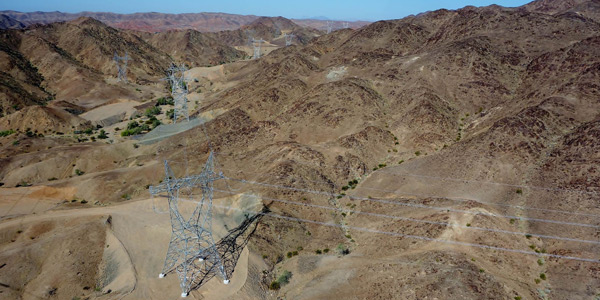By Robert Mullin
FERC on Wednesday accepted transmission calculations submitted by Southwestern transmission-owning utilities in support of their requests for market-based rates in their balancing areas.
But the commission’s approval of the simultaneous import limit (SIL) values provided by the Arizona and New Mexico utilities was accompanied by pointed advice about how FERC expects SIL studies to be performed and reported in the future (ER10-2302, et al.).
The commission’s Jan. 24 decision directly affects Arizona Public Service, El Paso Electric, Public Service Company of New Mexico (PNM), Tucson Electric Power, UNS Electric and UniSource Energy Development in Arizona and New Mexico. Also included in the order, which included 10 dockets, were Public Service Company of Colorado, Northern States Power and Southwestern Public Service Co., which submitted their SIL analyses at about the same time as the Southwestern companies in an effort to help FERC expedite its approval process for such studies.
PNM’s application for market-based rate authority within its own territory was rejected by FERC in October 2015 in part because of an inadequate SIL analysis. The PNM order was issued at the same time the commission issued a rule to clarify and streamline its MBR program, the first major update to the policy since codifying it in Order 697 in 2007 (RM14-14). (See FERC Refines Market-Based Rate Rules.)
The commission said it will use the accepted SIL values when reviewing updated market analyses submitted by the Southwestern transmission owners, as well as those filed by non-transmission-owning entities in the region.
Order 697 requires a utility to perform SIL studies in order to determine the amount of available transmission capacity that can serve the utility’s home market “under the most limiting normal and single-contingency operating contingencies.” The analysis is designed to determine how transmission constraints will limit energy imports to compete with the utility controlling the area.
The study, which examines transmission links with “first-tier” — or neighboring — balancing authority areas (BAAs), is expected to provide “a reasonable simulation of historical conditions” rather than a theoretical maximum transfer capability between areas.
FERC’s order commended the Southwestern utilities, which in many cases function as first-tier BAAs for each other, for coordinating the preparation of their SIL studies and sharing SIL values with each other.
“Such a coordinated approach leads to more accurate and consistent SIL study results,” the commission said, noting that the submitted studies were “generally” done correctly. “However, our review of the SIL studies and acceptance of the SIL values was hindered and delayed because of various modeling issues and incomplete or ambiguous reporting of results.”
In light of those shortcomings, the commission outlined guidance for submitting SIL studies. FERC said future filers:
- Should study system contingences in both the home and first-tier areas that are historically used and identified in the energy seller’s available transfer capability and OASIS practices documentation.
- Should furnish documentation showing that the contingency lists provided align with the BAA’s OASIS practices. A “valid” contingency would consider the realistic conditions and operating procedures for the home and first-tier areas.
- Must consider that, if a contingency does not solve in a powerflow simulation, it could be difficult proving that the contingency would not cause an overload somewhere within the system. That could affect SIL values, the commission said.
- Should ensure the accuracy of transmission line ratings in the home and first-tier areas.
- May use historical capacity factors for certain energy-limited resources, such as hydroelectric and wind capacity.
- Should explain the reason for changes in SIL values from previous studies and identify significant changes in the system, such as major generation additions or retirements and construction of new high-voltage lines.




